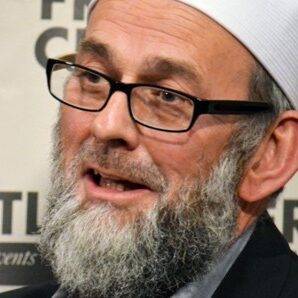Israeli Prime Minister Benjamin Netanyahu is making familiar noises about Hamas and “terrorism” in the wake of the announcement of the Palestinian unity government. “I call on all responsible elements in the international community not to rush to recognise a Palestinian government which has Hamas as part of it and which is dependent on Hamas,” he is reported to have said. “Hamas is a terrorist organisation that calls for Israel’s destruction, and the international community must not embrace it. That would not bolster peace, it would strengthen terror.” Israel, let us not forget, is a nuclear-armed state with massive military capabilities which is occupying and colonising Palestinian land. It is the state for which successive political party leaders and prime ministers in Britain have expressed their unflinching support.
Netanyahu clearly needs a reminder that his state was itself founded on what has been called “Jewish terrorism”. As the world prepares to commemorate the 70th anniversary of the D-Day landings, Israel’s timeline of terror, which started well before the founding of the state, makes interesting reading. It was intended, quite deliberately, to attack the British Mandatory government at a time when Britain and its allies were leading the fight against Nazi Germany and the Axis powers.
Throughout 1944, as the Allies prepared for and invaded Europe to free it of the Nazi menace, the Irgun and Stern Gang Zionist terrorist groups carried out a series of bombings against police stations and other government offices across Palestine. Their terrorism was not confined to historic Palestine, however. In November 1944, two “Jewish terrorist” murdered Britain’s Lord Moyne, the Minister of State resident in Cairo. The plan, it is claimed, was to blame the murder on Arabs but the Egyptian police caught the murderers who were hanged after being tried and found guilty.
Prime Minister Winston Churchill, a strong supporter of Zionism, said in the House of Commons that such acts will make him “reconsider” his support “if our dreams for Zionism are to end in the smoke of assassins’ pistols and our labours for its future are to produce a new set of gangsters worthy of Nazi Germany.” Even the Executive of the Jewish Agency referred to the group behind the murder as a “terrorist organisation”.
British military and security personnel were also attacked: in September 1944 a policeman was killed in Jerusalem; in December 1946 an army officer was kidnapped and flogged; and in July 1947 two British sergeants were hanged by Irgun and their bodies were booby-trapped. The most infamous attack of all during that period was the July 1946 bombing of the King David Hotel in Jerusalem, in which 91 British and local officials were killed.
Much has been made by Israel’s propagandists over the years about the visits of the Mufti of Jerusalem, Haj Amin Husseini, to Adolf Hitler, in order to court Nazi support for the Palestinian cause. Little is said, though, about the efforts of the eponymous Avraham Stern and his gang to do a deal with the Nazis “concerning the solution of the Jewish question in Europe”. This has been described as an “aberrant episode in Jewish history” which “should alert us to how far extremists may go in times of distress, and where their manias may lead.”
Throughout its short history, the state of Israel has committed many terrorist acts against Palestinian civilians. Former Chief of Staff Mordechai Gur is on record as stating that from 1948 onwards Israel always fought “against a population that lives in villages and cities.” Israeli military analyst Zeev Schiff has noted that Gur’s comments are basically an admission that the so-called Israel Defence Forces have “always struck civilian populations, purposely and consciously.” Atrocities took place in places like Qibya, where sixty-nine villagers were killed in 1953, two-thirds of them women and children; and Kafr Kassem in 1956, where 48 Palestinians were killed, more than half of them women and children. In neighbouring Lebanon, Israeli troops facilitated the infamous Sabra and Shatila massacre in 1982 when up to 3,500 Palestinian refugees were slaughtered in their homes. The massive, and disproportionate Israeli onslaught against the largely civilian population of Gaza in 2008/9 and again in 2012 was merely the most significant of a long catalogue of such acts. Palestinian farmers and fishermen are attacked by the Israel “Defence” Forces on an almost daily basis, with an accompanying loss of life, limbs and livelihood.
Israel continues to condone the terrorist acts of Jewish settlers in the occupied West Bank and Jerusalem; security forces regularly stand and watch as they commit their crimes, only springing into action when the victims are moved to defend themselves.
Arguably the biggest act of terrorism is Israel’s ongoing ethnic cleansing of the land of historic Palestine. That this continues in the full view of history, the media and the international community is a disgrace matched only by its politicians’ attempts to justify it on the grounds of “self-defence”. Netanyahu’s latest bleats about Hamas and terrorism are one example of where – no apologies for paraphrasing Orwell once again – lies are made to appear truthful and murder becomes respectable. He presides over a government which is well-versed in the dark arts of terror against civilians.
The state of Israel was founded on terrorism and its timeline of terror is long and bloody, and has yet to reach its end. When politicians and journalists have the courage to challenge the Israeli prime minister’s outrageous claims in an objective manner, perhaps it will.
The views expressed in this article belong to the author and do not necessarily reflect the editorial policy of Middle East Monitor.








